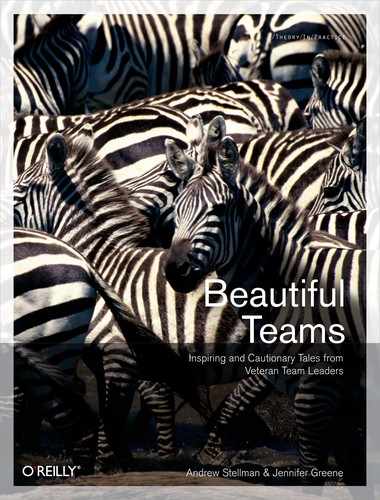It was only while writing up my recollections as a chapter for Beautiful Teams that I reckoned there was something deeper and more significant about my email blast than merely letting off steam. I think Alan and I were exploring a new management style and the role of a new communications technology. The significance wouldn't emerge for 20 years, until management consultants dubbed it a new trend in corporate behavior.
I pointed out at the beginning of this chapter that Edom Engineering management maintained a respect for engineers and a tolerance for their opinionated way of expressing themselves, a legacy of the company's start-up days. Something on Longjump caused this to break down—probably the reluctance of the CEO to argue with investors and for George to argue with the CEO, along with the new lines of command brought in by our merger. The engineers at the grass roots were not prepared to organize themselves to preserve their decision-making power in the face of this breakdown in corporate culture. But another force, technological in nature, stepped in to offer an alternative power arrangement.
We were living in a period before mass online participation, when the World Wide Web ran on only a few dozen sites. Yet already, online communities had experimented with a grassroots political activity that dispensed with traditional leaders and party centers. Although Howard Rheingold's influential book The Virtual Community: Homesteading on the Electronic Frontier (Addison-Wesley) was not published until 1993,[36] and John Perry Barlow didn't release his Declaration of the Independence of Cyberspace (now seen as something of a period piece) until 1996, knowledge of Rheingold's WELL was widespread among Internet users at the time I worked on Longjump, and I was already building a different way for people to work together with far-flung colleagues through email forums run by Computer Professionals for Social Responsibility.
I am convinced that Alan's challenge to send out my views through email was a response to the power he saw dormant in digital communications. Alan does not remember this time in his career well enough to say whether he was consciously working through its potential as I babbled away about deadlines and bug reports in his office, but the effect of our conspiracy was to let loose into the environment an unscheduled experiment in grassroots participation. My immediate enthusiasm showed that I, too, prepped by my political work online, was equipped to create the experimental organism we unleashed.
The results of the experiment validated the premise. Digital networks are powerful enablers for democratic action, at least among groups of people that already have ties. In such a degenerate corporate environment, so constrained financially, we couldn't expect miraculous results. The observed effects on employee morale were the best outcome we could hope for. But one could easily see how the same use of technology could actually support constructive project management in a healthier company, if deployed at any earlier stage and supported by enlightened management and social norms.
The vision that Alan and I presented that day—unconsciously in my case, but perhaps consciously in his—now fills the pages of management texts. It has become, in the wake of the Cluetrain Manifesto (by Christopher Locke, Rick Levine, et al.; Basic Books), Eric Von Hippel's The Sources of Innovation (Oxford University Press), and other books expounding on the value of openness, a hallmark of enlightened management. Few companies have moved yet to tap so radically the potential of employees (or customers and other stakeholders) organized in these ways into articulate policymakers for the organization. But many companies are talking the talk, and eventually that behavior will be accepted as normal.
[36] Alan was later to publish a critique of this book, but that doesn't detract from my observation that he was making use of online communication and noticing much of its potential.
